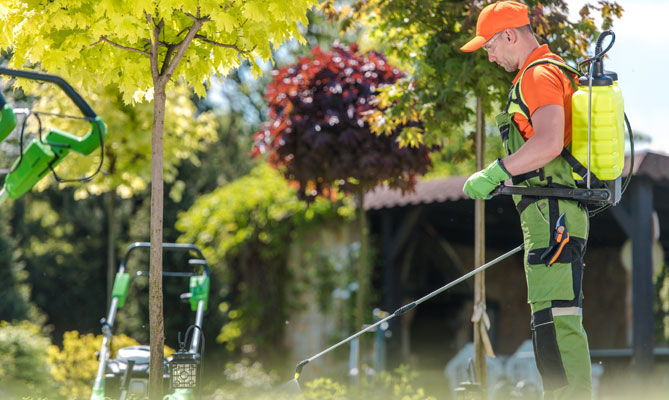Trees are a living investment that increases in value with each passing day. When properly taken care of, trees can be expected to thrive, grow larger, and live longer. Water them during dry seasons, mulch in the spring, prune overgrown stems and branches, and fertilize them when they lack nutrients.
Applying fertilizer adds the necessary nutrients and minerals to the soil, helping the trees to remain healthy and vigorous. In places with drier climates like Austin, fertilization ensures that trees stay in good shape even during drought and other harsh atmospheric conditions.
This tree fertilization Austin guide walks you through the importance of fertilizers, what they do, and when you should them.
Why Is Tree Fertilization Important?
Tree fertilization is important because it ensures that your trees have the nutrients they need to grow. In Austin fertilization is particularly important because the climate in this area is much drier, which means, it is more difficult for trees to find nutrients naturally.
For trees to grow effectively, they require nitrogen, potassium, phosphorus, sulfur, magnesium, and calcium among other nutrients. Adding these nutrients to the soil can help improve the growth of your trees and keep them healthy. It also makes it easier for trees to fight off pest attacks, diseases, harsh weather, and similar phenomena that are common in Austin.
Seeking a professional arborist service for the fertilization process can help you find out which nutrients are lacking from the soil so you can select the most suitable fertilizer and the most suitable amount. An arborist will test the soil from your property and give recommendations on the right fertilizer to use and the quantity, which takes us to the next question…
What Is The Best Fertilizer For Trees?
The best fertilizer for trees is the kind that contains nitrogen, phosphorus, and potassium, as the primary nutrients. These nutrients have different chemical compositions and benefit plants in different ways.
Nitrogen, for instance, helps in developing new cells and is vital in promoting total plant development. A deficiency in nitrogen can halt the production of cells, which in return can slow the growth of your trees. The symptoms of a nitrogen deficiency include stunted growth, yellowish brown leaf veins, and pale leaf color.
Phosphorus promotes faster root and seed development. A deficiency in phosphorus slows down cell division, which results in stunted growth and delayed tree maturity. If your soil does not have enough phosphorus, the trees will appear thin and fragile, with purple strips in the stems.
Potassium helps build strong and sturdy stems. It also promotes root growth and helps trees fight diseases and cold weather. A deficiency in potassium results in stunted growth and weak stems.
When Should I Fertilize My Deep Root Tree?
Deep root trees should be fertilized in spring (March or April) or in fall (October or November). Some people do it once in the spring or fall while others do it both in spring and in fall.
Fertilizing your trees in fall allows the soil to absorb the nutrients, which are then stored ready for absorption when the roots regenerate in the spring. If the nutrients are soaked up effectively, the roots will continue to feed and grow even into the cold winter months.
Since deep root fertilization requires special equipment, it would be wise to seek professional help from one of the tree fertilization Austin services.
How Do You Fertilize A Live Oak Tree?

To fertilize a live oak tree, use a fertilizer with a nutrient ration of 12: 4: 8, or 12: 6: 6 (Nitrogen: Phosphorus: Potassium). Here are tips to help you:
- Apply the fertilizer using a standard rotary fertilizer spreader.
- Split the fertilizer into two equal halves before the application.
- Apply the first half in horizontal rows and the second half in vertical rows. This will create even overlaps, which will ensure sufficient and even coverage.
- For the best results, make sure you are covering at least two thirds of your tree’s root zone.
Live oak trees experience a quick growth spurt during spring, which is followed by slower growth spurts distributed through summer and fall. To make sure the roots of your oak are taking in adequate nutrients after fertilization, have your fertilizer applied in the early spring before the first growth spurt begins.
Tree Service Removal Overview
Hot, dry weather, saturated soils, and pests’ problems have been wreaking havoc on Austin trees for many years. This has necessitated the use of fertilizers to keep trees healthy and in good shape. Applying fertilizers not only helps trees recover quickly from diseases and pest attacks but also makes them strong enough to withstand harsh weather conditions.
Use this Austin fertilization guide whenever you have doubts about applying fertilizer. And whenever possible, have your soil evaluated by an expert.



